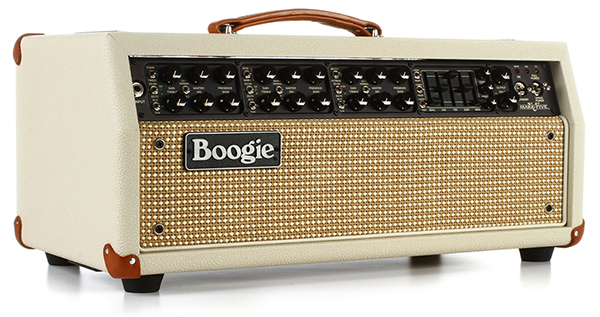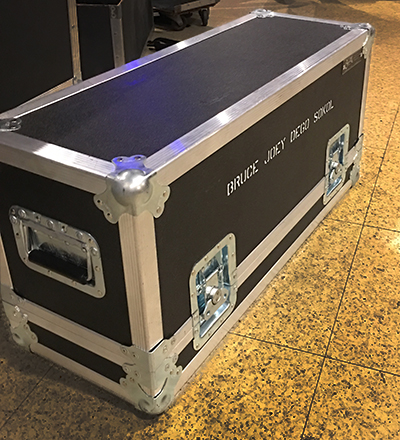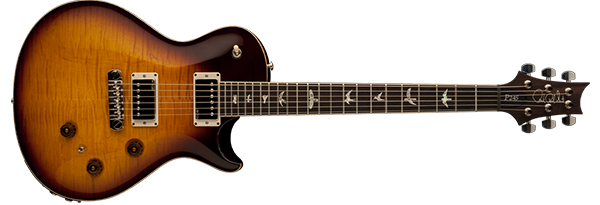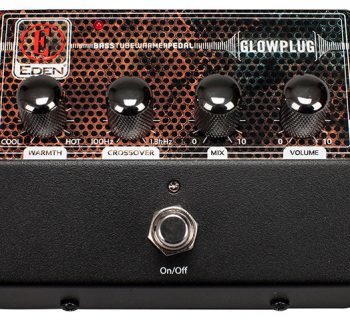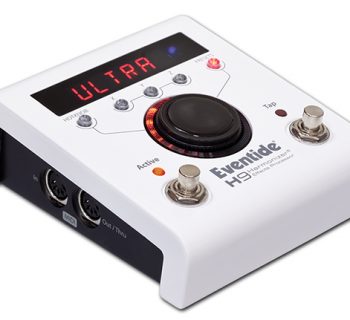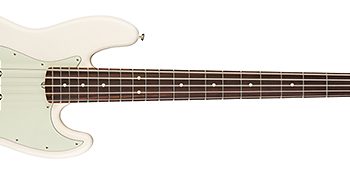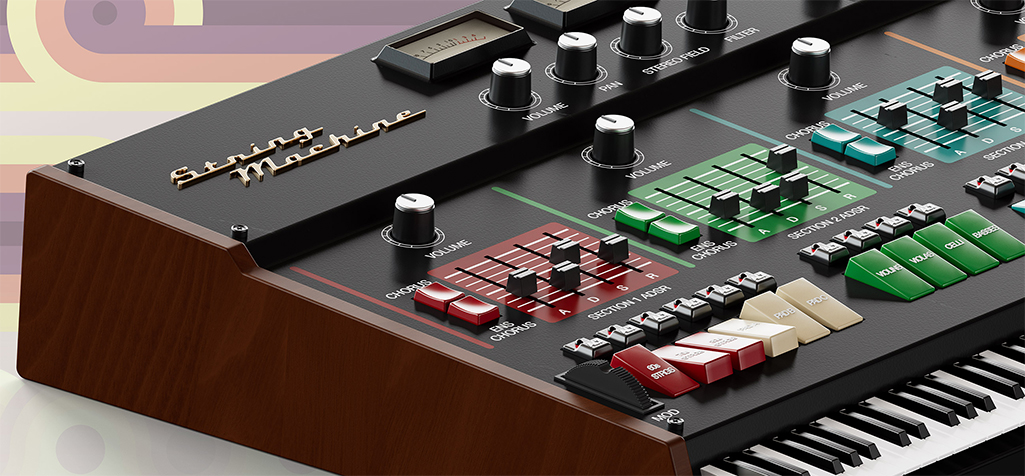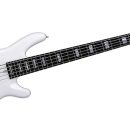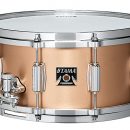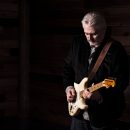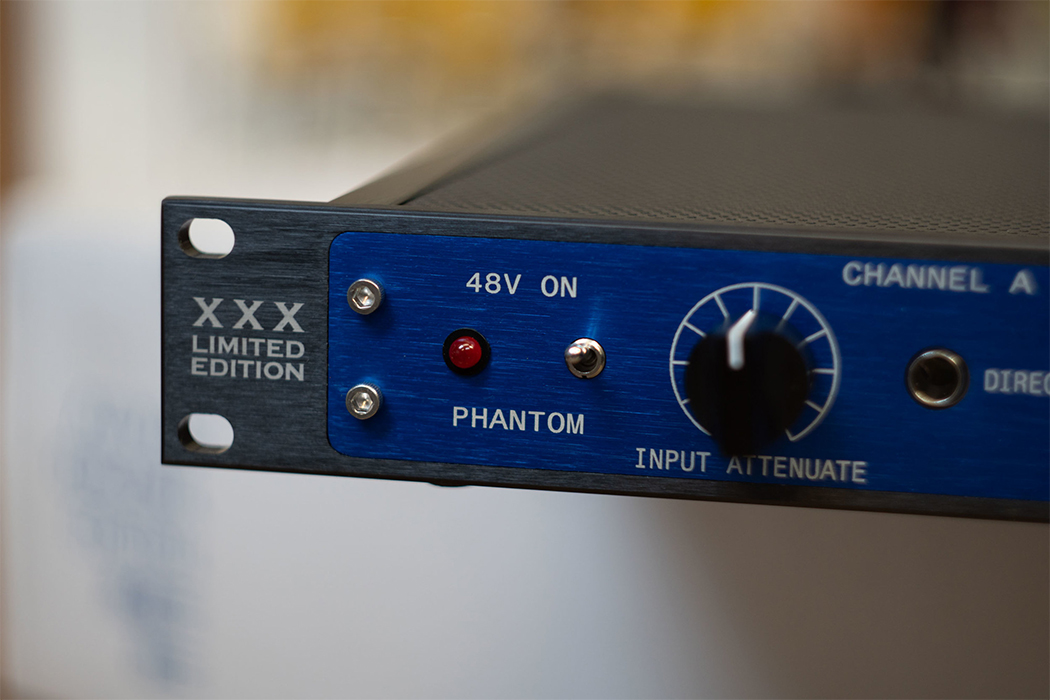
Mark Five 25
What has twenty-three toggles, thirty knobs, thirteen quarter-inch jacks, five sliders, and tonal variations that would take a lifetime to hear? If you guessed Mesa/Boogie’s flagship powerhouse amp, the Mark Five, you’d be right! And not to be discounted or overshadowed is the Mark Fives little brother, the Mark Five 25, which packages many of the best features of the Mark Five in a more economical and smaller-in-every-way-but-sound amp. And if that’s not enough, as we were getting ready to publish this review, Mesa introduced the Mark Five 35, which we’ll discuss as well.
Over forty years ago, the world heard its first high-gain amp when the Mark I was born. Working out of little more than a shack, Randall Smith and a small staff cranked out these new Mesa Boogie amps for customers seeking the soaring lead tones heard on Santana’s Abraxas album and more.
| Category | Value | Rating | ||||
| Features | 20% |
|
||||
| Usability | 25% |
|
||||
| Sound | 25% |
|
||||
| Documentation & Support |
10% |
|
||||
| Price | 20% |
|
||||
| OVERALL RATINGS: Mark Five = 3.5 Stars Mark Five 25 = 3.6 Stars, which earns it a WIHO Award! 3.6 stars or better: Outstanding, WIHO Award 3 stars or better: Worth considering 2 stars or better: Suited to specific needs 1 star or less: Not recommended |
||||||
Since those early days in the company’s history, Mesa has made numerous refinements to its Mark-series amps with many industry-leading firsts including channel switching, simul-class power, and a host of other innovations. Encapsulating the history of Mark-series amps in one box, the Mark Five delivers highly regarded (and coveted) tones spanning legendary releases like the Mark IIc+ and Mark IV while adding new, higher-gain tones, as well as some fresh, “classic” tones (think classic rock, not classic Mesa). Its baby brother, the Mark Five 25, does something you have to hear to believe: it delivers true Mark-series tone from a compact head that is powered by EL-84 tubes, as opposed to the line’s familiar complement of 6L6 tubes.
Features
The Mesa/Boogie Mark Five’s amplifier features four 6L6 power tubes, along with a 5U4 rectifier tube and seven 12AX7 tubes for the preamp and effects loop. The Mark Five 25 contains six 12AX7 preamp tubes and (surprisingly) two EL84 power tubes. Why Mesa didn’t just halve the number of 6L6 tubes is something of a mystery to us, but as you’ll learn, the results speak for themselves.
 The Mark Five is a true three-channel, multi-watt amp. Given the different voicings and configurations available in the amp, this results in tonal versatility well beyond anyone’s expectations. All three channels contain six knobs and four toggle switches. The knobs across the channels are identical: Gain, Master, Presence, Treble, Mid And Bass, however two toggles are channel specific (we’ll come back to those), while the other two toggles concern the EQ section (On/Of/Footswitch) and multi-watt function (90W/45W/10W).
The Mark Five is a true three-channel, multi-watt amp. Given the different voicings and configurations available in the amp, this results in tonal versatility well beyond anyone’s expectations. All three channels contain six knobs and four toggle switches. The knobs across the channels are identical: Gain, Master, Presence, Treble, Mid And Bass, however two toggles are channel specific (we’ll come back to those), while the other two toggles concern the EQ section (On/Of/Footswitch) and multi-watt function (90W/45W/10W).
 One of many brilliant features Mesa is noted for is their ability to run each of the three channels at different wattages. We can have our clean channel at full-weight 90W for maximum headroom while pushing our lead channel hard at 45W.
One of many brilliant features Mesa is noted for is their ability to run each of the three channels at different wattages. We can have our clean channel at full-weight 90W for maximum headroom while pushing our lead channel hard at 45W.
The Mark Five 25 is a two-channel amp with voicing nearly identical to channels 1 and 3 from the Mark Five. The Mark Five 25 tends to triage the best features of the Mark Five and incorporate them in a simpler, more user-friendly format. The V 25 is also a multi-watt head, channel assignable, but rated at 25W and 10W.
 The Mark Five 35 has four EL-84 power tubes and power settings of 35W/25W/10W.
The Mark Five 35 has four EL-84 power tubes and power settings of 35W/25W/10W.
Channel 1 on each amp offers the lowest gain settings and contains a three-position toggle to select the voicing for the channel (Clean/Fat/Tweed). An additional tone control toggle is specific to the Mark Five, adding a Normal/Bold choice that works in conjunction with all of the voicings.
Channel 2, exclusive to the Mark Five, delivers medium to high gain sounds. The mode toggle (Edge/Crunch/Mark1) pushes the amp into increasingly more gain. The final channel 2 toggle (Mark 1 Normal/Mark 1 Thick) serves only the Mark 1 mode of the channel.
Channel 3 offers the most searing, face-melting gain Mesa/Boogie has to offer. Its mode toggle (IIc+/Mark IV/Extreme) takes us through Mesa/Boogie’s history of channel switching in the Mark series. The modifying toggle (Normal/Bright) is again specific to the Mark Five amp, and it works globally on this channel to pepper the sound to taste.
Moving to the right on the face of the amps, we find the instantly recognizable five-band EQ section. The sliders are dialed in strategically at 80Hz, 240Hz, 720Hz, 2.2kHz and 6.6kHz, but the EQ has a more sophisticated implementation in the Mark Five head compared with the Mark Five 25 (and new V 35).
In the Mark Five, Mesa/Boogie decided to include a typical preset EQ that is selectable independently of the sliders. Three toggles (one per channel) allow you to assign each channel to either the preset “smiley face,” scooped, mid curve or your selected curve via the sliders. But wait! There’s more! Three Depth knobs to the right of the EQ allow you to assign just how aggressive the EQ affects each channel, individually! We couldn’t ask for a more versatile, post-channel EQ.
The EQ section works a little differently on the MarkV 25. Mesa included the same sliders set to the same frequency sweeps, but absent are the preset EQ curve and the preset Depth knobs.
Continuing to explore the Mark Five, we find familiar Output and Solo knobs. As on our other Mesa/Boogie amps, these master volume knobs are only active with the effects loop enabled—leave the loop On always, please. This Solo feature is not present on the Mark Five 25, but is included on the new Mark Five 35. In fact, it’s more advanced in the new amplifier—you can set the Solo volume control to either boost or cut volume when engaged, whereas it’s boost-only on the bigger Mark Five.
Mark Five 25 Tip: Use the foot-switchable EQ to attenuate levels to your liking for solos if you don’t have a boost pedal handy— assuming you can live without its tone shaping goodness.
Rounding out the front of the amp, we have our power toggles. While all three amps include On/Standby controls, the Mark Five adds control over Full Power/Off/Variac Power. The Variac Power setting delivers instant “brown sound” response. By lowering the voltage, this setting results in more sag and a little less volume, but it impacts the entire amp, so we’d only suggest using it if you’re after more vintage tones as opposed to modern metal.
 On the rear of the Mark Five, there are four standard, quarter-inch jacks for external switching control whether using Mesa’s footswitch or a third-party solution, as well as Mesa’s proprietary multi-pin connector for use with their advanced foot controllers. The Mark Five 25 has a simpler, single switching jack on its face, while the new Mark Five 35 has a multi-pin connector exclusively.
On the rear of the Mark Five, there are four standard, quarter-inch jacks for external switching control whether using Mesa’s footswitch or a third-party solution, as well as Mesa’s proprietary multi-pin connector for use with their advanced foot controllers. The Mark Five 25 has a simpler, single switching jack on its face, while the new Mark Five 35 has a multi-pin connector exclusively.
Just to the right of the switching jacks, the Mark Five has a mono, buffered serial effects loop that features a Send level knob as well as a hard bypass switch. The Mark Five 25 and Mark Five 35 also include an effects loop, however there is no send level.
Moving on, the next section on the rear of these amps controls the reverb. Three knobs allow for different mix levels across the three channels of the Mark Five, while there are two knobs for reverb levels on the Mark Five 25 and Mark Five 35. On the Mark Five, directly underneath these knobs you’ll find toggles for rectifier tracking. Channels 1 and 2 are selectable between tube and diode (only applies to the 45w setting), while channel 3 can select between pentode and triode.
The Mark Five features a Slave Output with a send level and a Tuner Out, as well as a fan on/off toggle for silent recording, and a bias switch for 6L6 or EL34s tubes. If you stick with Mesa brand tubes, there’s no need to bias the amp.
 The MarkV 25 and Mark Five 35 have no slave or tuner out, but they do one-up the big Mark Five with their inclusion of the Mesa Cabclone DI and cabinet simulator on the rear panel. This includes a speaker On/Off switch that allows you to record in silence, closed back and open back options, and a ground lift switch which disconnects the ground pin and reduces the possibility of a ground loop. The Mark Five 35 goes one step further than the Mark Five 25 by adding the Vintage cabinet tone option that is found in the stand-alone cabinet simulator.
The MarkV 25 and Mark Five 35 have no slave or tuner out, but they do one-up the big Mark Five with their inclusion of the Mesa Cabclone DI and cabinet simulator on the rear panel. This includes a speaker On/Off switch that allows you to record in silence, closed back and open back options, and a ground lift switch which disconnects the ground pin and reduces the possibility of a ground loop. The Mark Five 35 goes one step further than the Mark Five 25 by adding the Vintage cabinet tone option that is found in the stand-alone cabinet simulator.
Another nice touch: The smaller amps include headphone jacks for silent practice, too!
An eight-button foot switch (that’s more switches than some pedalboards have) is included with every Mark Five: three buttons for channel selection, reverb, EQ, loop on/off, tuner, and mute. The MarkV 25 includes a simple, two-button footswitch for channel selection and EQ on/off. The Mark Five 35 includes a four-button footswitch that controls channel selection, Solo Chanel 1, and Solo Chanel 2.
 Finally, it should be noted that if one or two stock colors don’t satisfy your aesthetic tastes, Mesa offers quite an extensive range of options for how you want your amps to look. Our custom-ordered Mark Five came in a very well stated cream color Tolex with a cream grill (we have enough black and olive color amps already). Exotic leathers and beautifully finished hardwoods are all available as well. We left our Mark Five 25 in its standard black dress.
Finally, it should be noted that if one or two stock colors don’t satisfy your aesthetic tastes, Mesa offers quite an extensive range of options for how you want your amps to look. Our custom-ordered Mark Five came in a very well stated cream color Tolex with a cream grill (we have enough black and olive color amps already). Exotic leathers and beautifully finished hardwoods are all available as well. We left our Mark Five 25 in its standard black dress.
Usability
Mark Five
Make no mistake: the Mesa/Boogie Mark Five is quite sophisticated, and all of that capability comes with a bit of a learning curve. Many people who dislike Mesa amps probably never took the time to learn the do’s and don’ts inherent with these amps. Although the interface is extremely logical once you learn how it works, it’s not the same as walking up to a thirty years old, dual-channel Marshall head and expecting the same immediacy of operation. There is room for pilot error, and if you don’t know the proper way to dial in a Mesa amp, you can certainly make it sound undesirable.
We love the voicing switches on each of the channels for the tonal variety they create, but you do have to be careful when making selections as there are some considerable volume differences among the options. We once made the mistake of trying to go from the IIC+ voicing to the Extreme voicing in a live setting, and the volume nearly doubled! These settings are not meant for on-the-fly switching, rather they are meant for configuring your amp channels and subsequently playing the amp with specific voicings (hence mini toggle switches).
The included eight-button footswitch was both responsive and more importantly, quiet. There are no pops or clicks when cycling through the channels. But one peculiarity is that when you first turn on the amp, you actually have to select a channel to hear something (the amp doesn’t default to any specific channel). Mesa may have missed the mark slightly on the V25 footswitch, as they chose to include solely a channel and EQ on/off switch. We would find foot-switchable reverb preferable to switchable EQ (like on the Mark Five), but you may be satisfied with this control arrangement.
Despite the initial scare of so many switches and knobs, control layout is one of Mesa’s strengths, and once you become familiar with the amp’s layout, operation is fast and intuitive. The Mark Five’s controls were well laid out, with the most important features placed on the front of the amp. The rear has mostly set-and-forget controls (like reverb levels for the individual channels), unlike other amps we’ve reviewed that have essential functions questionably placed on the rear.
Considering these are multi-watt amps that have the ability to reduce power output all the way to 10w, we like the amps in their slightly smaller-than-typical sizes. At 22 ¾” wide for the Mark Five, it sits very nicely on top of a compact 4x10 cabinet (though it still drives our 4x12 cabs without breaking a sweat). The Mark Five 25 measures in at a mere 14” wide and is an excellent choice if you want to stick your entire rig inside of a 19” rack—this one fits on a shelf quite easily.
The Output and Solo knobs are a must-have features, but making use of them requires leaving the effects loop engaged (which is fine with us). As such, having the effects loop foot switchable seems rather pointless. If your needs are for a simple, single-channel amp without an effects loop, this isn’t the amp for you. But if you’re a player who craves great tone and great flexibility, with easy effects interfacing, and loads of sonic options, this is a great amp for you, and there’s no reason you’d ever want to bypass the effects loop and compromise the amp’s feature set.
Hearing little-to-no discernable difference with the loop on or off during our sound tests (especially once playing with other instruments in a band setting), we wonder why Mesa still offers this as an option. In the old days of a few pedals, it made sense. Today, any player with an amp of this caliber is going to have a looper/switcher for their effects anyway, so there’s less need than ever before for the amp to offer a bypassable loop.
Mark Five 25
The scaled-down feature set of the Mark Five 25 makes this a much simpler amp for the player new to the Mesa family. There were far fewer options and controls, and one fewer channel.
The EQ is a straightforward on/off affair, with no hidden preset alternative to the visible sliders. And the footswitch was a simple, two-button affair. We could choose Channel 1 or Channel 2, and we could select EQ On or Off. That’s it.
The Mark Five 35 delivers the best of both worlds. Its four-button footswitch controls channel selection, EQ On/Off, and Solo 1 and Solo 2—a nice touch here is that you can set different solo levels for each channel, and this alternate volume can provide either a boost or a cut if desired.
The Mark Five 25 defaults to the first channel, so it’s ready to play the moment you take it out of standby.
The CabClone technology was simple to utilize. It was easy to run an XLR cable from the amp to our studio recording interface/mixer, and turning the speaker Off made it easy to record or practice without disturbing anyone. We would love to see this feature added to the Mark Five as well. Players with the Mark Five are more likely to need compensated outs to send to front of house.
Sound
Mark Five
Although proper testing calls for a Mesa Rectifier 2x12 or 4x12 cabinet, we simply could not wait to get into the big studio, so preliminary sound tests happened in our living room with a Marshall 4x10 cab… and the Mark Five sounded fantastic! It really made us question why more guitar companies don’t explore the use of 4x10 cabinets instead of the ubiquitous 4x12. Plugging into a Gibson Les Paul Custom, we ran the amp at full power.
Flipping the standby switch and selecting Channel 1, we set the mode toggle to Clean. This was pristine clean. No grit at all to be had on this voicing. It was punchy and articulate. Had this been the only clean voicing, we would not have been disappointed. Flipping the toggle down one position to Fat, we heard a definite bump in the lows to low mids. An ever so slight amount of breakup with the guitar’s volume on full will please the blues players who want tones reminiscent of early Fender amps. However, the Tweed voicing was outstanding in different ways. It added just enough Texas growl to be really, really cool and serve as our platform for loading up on effects. Not to diminish the usefulness of the other two modes, Tweed was by far our favorite of the three voicings on Channel 1.
On Channel 2, we found a nice bridge between low and high gain on this amp. Staring with the Edge voicing, we worked the gain and presence knobs until we found a good, classic rock rhythm tone. The sound was punchy, with plenty of dynamics, while not overly saturated nor compressed. The middle position on the channel toggle, Crunch, yielded similar results. Both voicings were JCM Marshall sounding, with Crunch having just a little more push to it. The Mark I voicing was over the top and our favorite starting point for a high-gain sound. We felt the three voicings on this channel were quite distinct, and material dependent. It’s worth noting that the Edge and Crunch voicings paired with overdrive pedals particularly well. With a large pedalboard, we felt we could stay on this one channel most of the night for many of our gigs if we wanted to (but with so much tonal variety at our fingertips, who would do that?).
Finally turning our attention to Channel 3 was the moment we were waiting for. The coveted Mark IIC+ sound was stellar! We found thick and creamy overdrive with plenty of overtones begging to be played, and the bright switch on this channel gave it just the right amount of bite. Whether you’re after the tone of Carlos Santana or John Petrucci, and anything in between, this is tone heaven; one of those sounds that defines so many great moments in the history of rock n’ roll.
We felt the Mark IV voice was similar in tone to the IIC+, but with slightly more gain on tap. The Extreme voice is really the new addition to the Mark series, and traditional Mark-series fans may actually find it a bit over the top. This is raucous, heavy, and easily excitable. The almost unwieldy third channel of an EVH 5150 III comes to mind, not in terms of tone, but in terms of the response. You definitely need to be on top of your technique to wield this raging stallion of a molten metal voicing.
But it’s the IIC+ and Mark IV voicings that are worth the price of admission. The Mark Five delivers classic, coveted Mark-series tone in an amp that has an overall improved feature set compared with the earlier generations, without taking anything away from the tone. One thing is certain: there is something for everyone in this amp.
A few things we discovered across the three channels: the Mid knobs did very little to the tones of the channels. We didn’t hear much difference when turning the Mid knobs throughout their range, almost to the point of not mattering one way or the other if the amp even had them. We could only assume the Mids are very focused with a narrow Q setting.
Tip: If the Mark Five is your first Mesa amp, beware the Bass control! Mesa amps have far more low end than your typical British alternative, and EQ should be dialed in with extreme care. If you’re pushing the Bass knob to 12:00 or beyond, you’re probably turning the sound into a flubby mess. Less is definitely more with these amps.
The manual warns that the EQ section is addictive. We found it to be so addictive it now stays on full time! We like the sound of the preset sweep in the Mark Five and found it easy to overdo things if we set the sliders ourselves. Not having the EQ on now feels roughly akin to drinking a soda with no ice. We also found the Preset Depth knobs sounded best nearly dimed out.
Shortly after our preliminary sound tests, we took our amp on stage with Adrenalize, a Def Leppard tribute band. A crowd of a few hundred was in attendance… as well as a Mesa Rectifier 4x12 cabinet. We loved the sound of the amp through the Mesa cab in a large room, and all the praise we felt before now climbed to another level. As we’ve commented in previous Mesa reviews, they really tune their amps to their cabinets, and the combination of a Mesa amp with a Mesa cabinet is really the best way to enjoy true Mesa tone. It’s an end-to-end experience.
The amp needed little tweaking from our preliminary settings with the move to the big stage. It exceeded our expectations, and we were pleased by just how good of a choice this head was for the show. The clean channel was a fantastic wake-up from the amp we have used for this gig in the past. Our Eventide and TC Electronic time-based effects had a larger dimension to them, which we attributed to the EQ section and how it serves to season the sound in a very colorful way. We played our Ibanez Jem 7VWH for the evening, and the five-way pickup selector yielded some great sounds, especially the in-between clean and dirty tones. Gain on the IIC+ channel set to about 7:00 gave us the best results. We pushed the clean channel’s Tweed setting at 45W to give us a little more breakup and bold feel to it.
Mark Five 25
We also spent a healthy amount of time with our Mark Five 25, playing a variety of different guitars. Most of our testing was conducted using a Mesa Rectifier 2x12 cabinet, and this combination proved fantastic beyond our expectations.
We were skeptical from the start: EL-84 power tubes? One would think that a low-powered Mesa amp would simply have a 2x6L6 configuration (instead of the typical four valve design), or lower powered 6V6 tubes. A switch to the baby bottle brother of the British amp favorite EL-34 seemed implausible. You just don’t get classic, American, Mesa tone from those inferior tubes.
Boy, were we ever wrong in our assumptions, which truly kicked our asses on this one. It’s not just that this EL-84 powered amp sounded like a true Mark-series amp, but also that it sounded so darned great in general!
We felt the two channels faithfully recreated the sound of the bigger Mark Five’s Channel 1 and Channel 3, allowing of course for the fact that the Mark Five has additional tone-shaping options.
The Mark Five 25 had the glorious, mid-gain clean we loved from the Mark Five. And, the IIC+ channel was also faithfully transplanted into this smaller box. However, we really wished the preset depth knobs were present on the Mark Five 25 as that feature was so addicting. We are addicted and missed it greatly (it’s also absent from the Mark Five 35, which we didn’t get a chance to play).
In contrasting the Mark Five and Mark Five 25, we felt the Mark Five handled pinch harmonics a little more easily and clearly. The Mark Five 25 did this well, but we definitely heard a difference that gave the big bottles the edge.
We were also schooled on just how loud 25W can get! We would have had no problem at all playing with our least dynamic drummer friends and being heard loud and clear with this amp. It’s plenty powerful enough to rock. But mostly, we were just humbled by what an amazing job Mesa did of delivering their classic 6L6 tone through such an unexpected choice of power amp tubes.
Audio demo of the Mark Five 25 through its CabClone output.
Performed by MusicPlayers.com writer, Joey Hayek.
Documentation and Product Support
A very thorough user’s manual is included with both amps. Every feature is discussed, as well as tips on how to get the most out of the amp, and great primers all about the technology of tone. Mesa’s amp manuals are the best in the biz. And, their website is flooded with videos and additional information sure to satisfy any questions you may have.
A five-year, transferrable warranty is issued with every amp.
Price
The Mesa/Boogie Mark Five sells for $2,349 dressed in black. Colored Tolex or exotic leathers such as gator or snakeskin will bump the price up as much as a few hundred dollars.
We feel the Mark Five is well priced for an amp with such an extensive feature set and superb sound—it’s worth every penny. Many people forget, Mesa always was and is still a small, American, boutique company with a workforce measured in dozens, not hundreds.
The Mesa/Boogie Mark Five 25 sells for approximately $1,399. If you want a lower wattage amp that has fewer bells and whistles but is easy to carry and almost as great in the tone department, there is good value here.
The new Mark Five 35 fits in the middle, adding a handful of additional features to the smaller amp and sells for $1,599. However, for another $750 dollars, you can get a third channel, rectifier tracking, additional voicing switches, double the wattage, and the advanced EQ section. Is it worth it? Well, that’s budget- and player-specific, but any of these will serve players well.
Contact Information
Mesa/Boogie
www.mesaboogie.com
Evaluation Short-List
Marshall JVM410H
Hughes and Kettner Grandmeister 36
Rivera Knucklehead Tre Reverb

